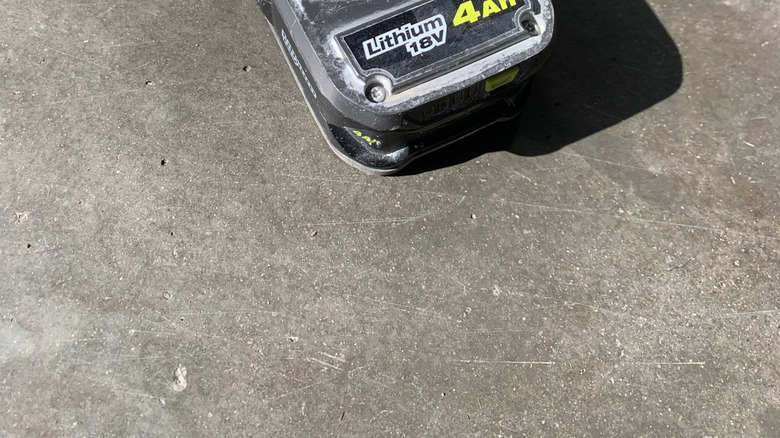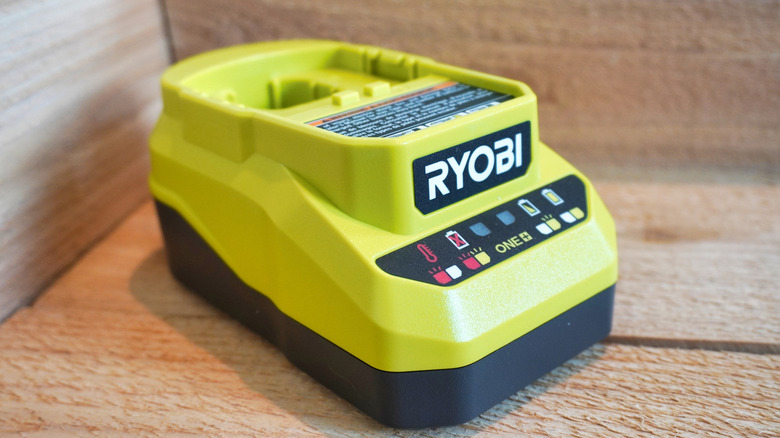You Can Reset A Ryobi Battery, But It's Not Worth The Fire Risk
Just because you can, doesn't mean you should. It's an age-old nugget of wisdom, and it certainly applies to resetting a Ryobi battery that's not charging like it should. Plenty of online guides claim you can reset a Ryobi lithium-ion battery that's giving you trouble, but be warned: the process is incredibly dangerous and very well could lead to a fire. These tutorials show you exactly how to short out internal chips, disassemble the pack, and manually "boost" the cells, but again, we must stress that these do-it-yourself fixes come with more risks than benefits.
The guides generally suggest using a phone charger on the battery terminals to force a charge back into a dead battery, tricking the charger into recognizing it again. The problem is that lithium-ion batteries are not designed to be handled this way. Even small mistakes (such as mixing up positive and negative terminals) can damage the cells or trigger what's known as thermal runaway, an uncontrollable chemical reaction that leads to fire or explosion.
If that's not enough to dissuade you, know that the manufacturer does not endorse these reset methods whatsoever. In fact, Ryobi's battery warranty is quite clear about this: if the battery stops charging, either use the warranty to replace it or buy a new one.
The dangers of resetting a lithium-ion battery
Lithium-ion batteries are used in electronics from cellphones to power tools, and it's no wonder why: they're as lightweight as they are powerful. They're also able to store a ton of energy in a small package. That said, if the battery gets damaged, overcharged, or modified in any way, it can quickly overheat and even catch fire. According to fire safety officials, the number of incidents involving lithium-ion battery-powered devices has increased drastically as they've gotten more popular, causing more house fires, more injuries, and even more fatalities.
It's because of the thermal runaway. Once a battery cell reaches a critical temperature, the chain reaction simply can't be stopped. The battery swells, hisses, and eventually bursts into flames. And being an electrical fire, it's extremely hard to put out — just look at the hard battle firefighters face with EV fires. Water does very little, and some fire extinguishers can be just as useless.
What to do instead of resetting a Ryobi battery
Trying to "reset" a Ryobi battery with stripped wires and improvised tools violates so many safety protocols it's not even funny. Even if the reset works, there is no guarantee that the battery cells weren't weakened in the process. For the average homeowner, that risk far outweighs the cost of simply buying a new battery.
If you're still under the warranty period, just exchange it instead. Ryobi's warranties cover batteries for up to three years, and the original retailer may also offer a warranty of its own, so be sure to check that as well. Under most of these warranties, the replacement process is completely free. If the battery stops working outside the warranty period, it's likely nearing the end of its natural lifespan. Lithium-ion power tool batteries typically last only a certain number of charges and discharges before their capacity starts to fade. At that point, replacement is the easiest move.


